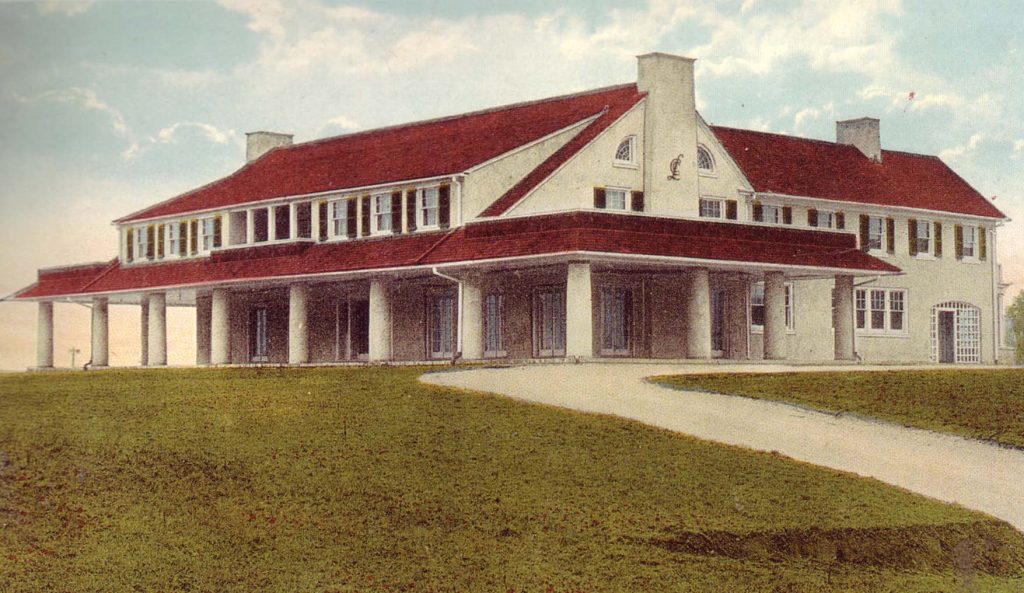Building on Shared History

Looking for a retreat from increasingly hectic lives in March of 1900, seven men gathered on North Duke Street to discuss the formation of a country club for Lancaster. Later that year, in May, Lancaster Country Club contracted Wohlsen Construction founder Herman Wohlsen to build the first clubhouse on Juliet Avenue in Manheim Township, Lancaster. The first clubhouse was modest and, at the time, only cost $2,640 to build.
Membership quickly outgrew its original home, and plans for a new country club were in the works by 1911. In 1913, the Lancaster Country Clubs Board of Governors purchased 60 acres on New Holland Pike as the new permanent location for the Lancaster Country Club. Herman Wohlsen was contracted yet again to build the new clubhouse.
Over 100 years later, Wohlsen Construction was back to help them achieve their defining moment, building on our shared history of providing outstanding amenities to the Membership and the local Lancaster community.
A Defining Moment
Referred to as a “Defining Moment,” this project was pivotal in creating an unparalleled membership experience for the Lancaster Country Club. The project aimed to enhance the club’s appeal across the board, particularly emphasizing making the club more popular among younger professionals with families. Since the project’s conclusion, the member-owned club has already seen positive results. The response of the local Lancaster community to the changes was almost immediate as more than double the number of new members, representing an average age of 41, signed up after the project was announced.
Creating an Unparalleled Membership Experience
Wohlsen was brought on board to tackle the extensive scope, which included a new paddle hut, a new activities pavilion with a resort-style pool, a renovation to the existing clubhouse, and a relocation and renovation of the existing pro shop. All these projects comprised the core “Defining Moment” project, bringing the next generation of first-class amenities to accompany the championship golf course.
The new 22,000-square-foot activities pavilion is the focal point of the Club’s expansion. The two-story building was constructed on a former parking lot and overlooks the Conestoga River. The upper level features a bistro with a dining terrace, a lounge/bar, an activity terrace, golf simulators, and a kid’s lounge with on-site childcare. On the lower level is a pool deck café, a 1,700-square-foot fitness center with an 800-square-foot group fitness room, men’s and women’s locker rooms, family changing rooms, and a lifeguard station. Outdoor amenities of the activity pavilion include a kitchen and bar, pool-deck café, kiddie pool, leisure pool, and an eight-lane outdoor competition pool.
With the new activity pavilion came a new golf plaza that consists of a refreshed pro shop, a new snack hut, a new fire pit terrace, and a new golf plaza entry and drop-off. A new outdoor cocktail lounge surrounds the putting green providing a 180-degree view of the golf course.
The project also included a major renovation to the main clubhouse with a complete mechanical upgrade. This involved over 9,000 square feet of updated banquet and private function space, a reinvented dining and bar area, expanded outdoor dining and social terraces, new women’s lounge and locker room, a new dining corridor, renovated 19th-hole bar, and a renovated men’s locker room and showers.
Enhancements were also made to the racquet facilities with a new 850-square-foot paddle hut, including an increased viewing deck for Har-Tru courts, an interior lounge, and renovated restroom area.
Open While Under Construction
Lancaster Country Club’s “Defining Moment” project had a tight nine-month schedule to ensure all project phases were completed before the grand opening. The club also remained open during construction, so the team needed to ensure that all construction activities created minimal disruption to the daily activities of members, staff, and visitors and work around planned club events and deliveries. Throughout the construction, the Wohlsen team ensured that all planned deliveries of construction equipment and materials and the flow of other construction-related traffic were coordinated with the club.
From the start, the Wohlsen Team’s main goal was to ensure that the Lancaster Country Club could continue operating as usual during construction. As construction began on the activities pavilion, the team discovered that a high-voltage power line was running underground through the excavation footprint. The team quickly worked with the local provider to de-energize the line so construction could continue. The de-energization of the line would have disrupted the ongoing operations of the club, so the team made sure that they installed a temporary electric line before the existing line was de-energized so that the club experienced no disruption in power.
As construction continued, the Wohlsen team also discovered that the existing water line running to the club was deteriorated and corroded, meaning that the line would need to be replaced to gain the water pressure required for existing and future operations. Due to the lead time of the replacement pipe, the team installed a temporary above-ground water line that the club could use until the new line arrived and could be installed. By looking out for the club’s best interest and installing the temporary line, the club’s operations continued as usual, and members were still able to take advantage of all club amenities.


